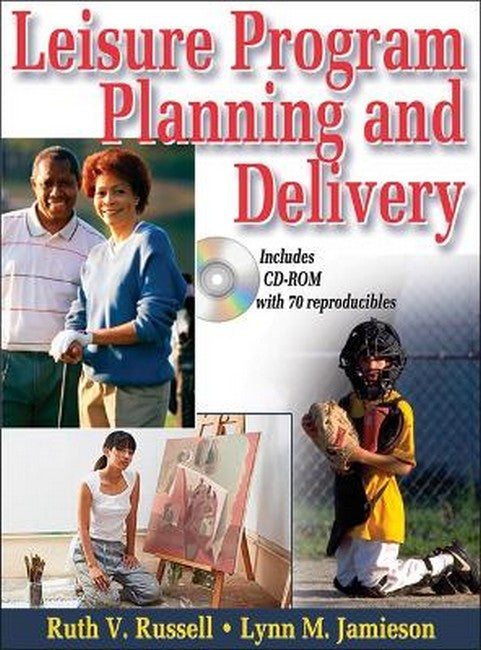Ruth V. Russell, ReD, is a full professor in the department of recreation, park, and tourism studies at Indiana University. She is a former trustee of the National Recreation and Park Association and a former president of the Society of Park and Recreation Educators. She has programming experience with San Diego Recreation and Parks Department, San Diego-Imperial County Girl Scout Council, a variety of Girl Scout camps, the Book Works retail store, Allied Gardens, and Chateau La Jolla Retirement Complexes. Dr. Russell is the author of numerous textbooks, technical reports, book chapters, and journal articles pertaining to recreation program planning. Lynn M. Jamieson, ReD, is chair and full professor in the department of recreation, park, and tourism studies at Indiana University. Previously, she served as curriculum coordinator of the recreation administration program at California Polytechnic State University and spent 12 years in administrative positions as a recreation administrator, with special emphasis on recreational sport management. She has coauthored four texts and more than 50 articles about various aspects of management in leisure services.
Request Academic Copy
Please copy the ISBN for submitting review copy form
Description
Part I. Foundations of Programming Chapter 1. The Importance of Programmed Leisure Benefits of Leisure Leisure and Well-Being Programmed Leisure Summary Glossary References Chapter 2. The Profession of Leisure Programming Organizational Settings Personal Qualities Professionalism Summary Glossary References Chapter 3. Programming Principles Quality Customer Service Customer Satisfaction Diversity Public Good Environmental Compatibility Efficiency Continuous Improvement Summary Glossary References Chapter 4. Leisure Program Components Activity Areas Program Formats Putting the Components Together Summary Glossary References Chapter 5. Overview of the Program Planning Process Program Models Program Planning Process Summary Glossary References Part II. Planning Preparations Chapter 6. Understanding Your Organization and Community Philosophy and Values Vision Network of Individual Constituents Network of Group Constituents Summary Glossary References Chapter 7. Assessing Patrons' Program Needs Methods of Needs Assessments Identification, Interpretation, and Utilization of Data Conducting a Needs Assessment Uses of a Needs Assessment From Needs Assessment to Marketing Plan Summary Glossary References Chapter 8. Program Goals and Objectives Program Rationale Formulating Goals Preparing Objectives Summary Glossary References Chapter 9. The Program Plan Purposes of a Program Plan Types of Program Plans Elements of a Program Plan The Role of Program Life Cycles Summary Glossary References Part III. Program Implementation Chapter 10. Making Operational Decisions Budgeting Facility Usage and Coordination Program Communication Program Policies Summary Glossary References Chapter 11. Leading and Supervising Programs Determining Staffing Needs Expectations for Program Staff Recruiting, Training, and Retaining Staff Summary Glossary References Chapter 12. Program Monitoring The Importance of Program Monitoring Specific Program Monitoring Systems Other Program Monitoring Systems Summary Glossary References Chapter 13. Managing Risk in Leisure Programs Developing a Risk Management Plan Conducting Programs With Care Supervising Participant Behavior Summary Glossary References Part IV. Program Evaluation Chapter 14. Evaluation Approaches Timetables for Evaluation Rationale for Evaluation Obstacles to Evaluation Types of Evaluation Developing an Evaluation System Summary Glossary References Chapter 15. Evaluation Steps Step 1: Preparing an Evaluation Proposal Step 2: Designing the Study Step 3: Selecting a Sample Step 4: Collecting Information Step 5: Interpreting the Information Gathered Step 6: Preparing the Final Report Step 7: Putting the Findings Into Action Summary Glossary References

